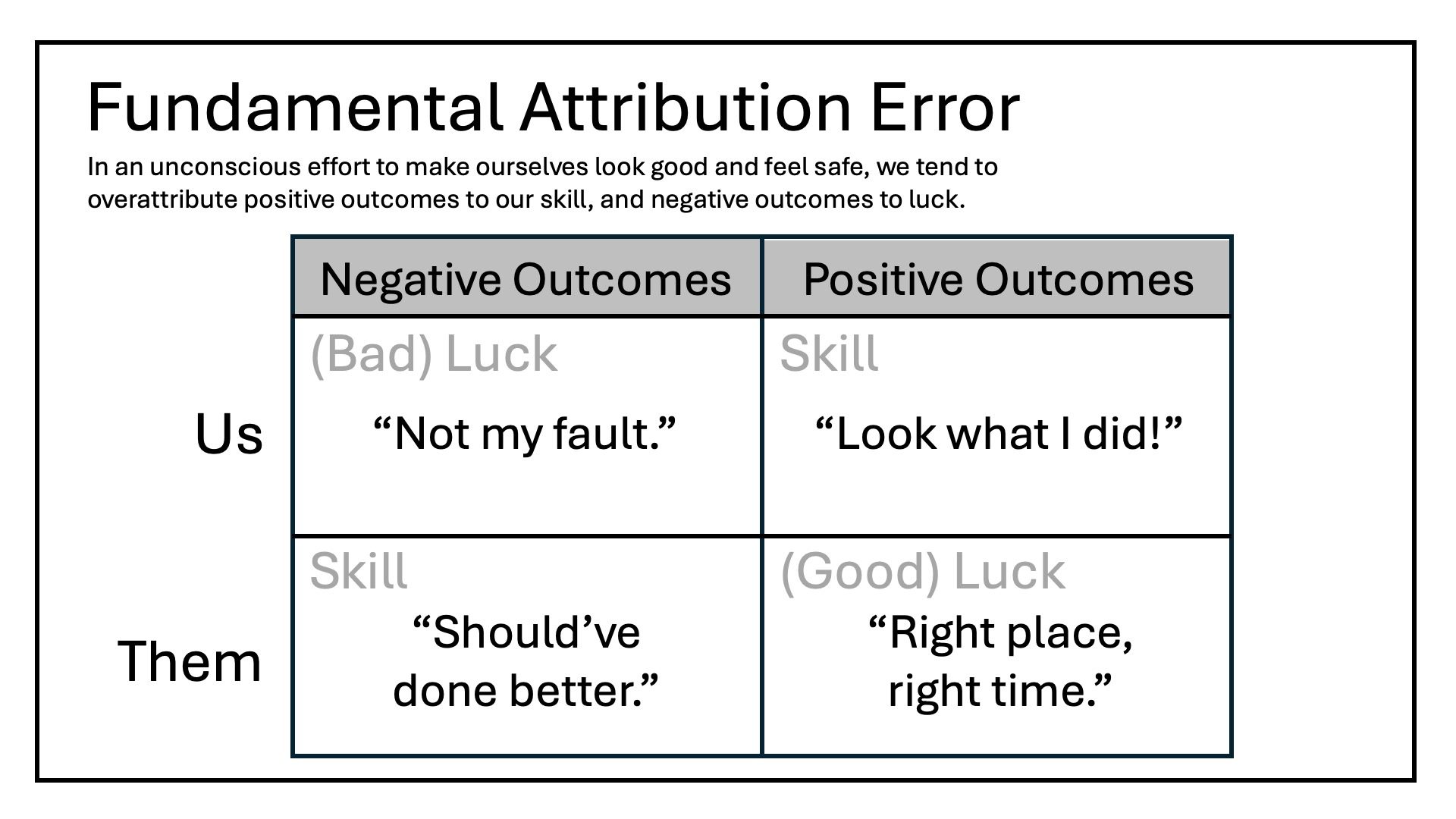The Gist
-
Skill vs. luck. Understand the balance between skill and luck in driving marketing outcomes. Mastering this can transform your approach to campaigns and strategy.
-
Market health matters. Investing in market system health improves your chances for consistent marketing results.
-
Agility drives success. Agility in monitoring trends and responding quickly can turn unpredictable challenges into opportunities for improved marketing outcomes.
Marketing outcomes are the result of skill (internal factors we control) and luck (external factors out of our control). People build skills through education, training, practice, experience and experimentation, but can luck be improved?
Some people say that you shouldn’t worry about luck because it’s out of your hands. While this thinking is true for some things, with the right mindset and practices, marketers can encourage positive marketing results by becoming drivers of luck, not just passive receivers.
Distinguishing Skill From Luck in Marketing Success
Understanding the difference between skill and luck is a vital first step. Confusing the two stops marketers from seeing opportunities to learn and course correct. Annie Duke — professional poker player, decision strategist and author of “Thinking in Bets: Making Smarter Decisions When You Don’t Have All the Facts” — suggests a method for distinguishing them:
- Skill: Duke recommends calling something a “skill” if making the same decision again would conclusively drive the same outcome or if making a different decision would result in a different outcome. You need skill for great performance in situations with clear, fixed rules. For example, skill dominates in a chess victory because chess has many rules, moves are calculated, and there are few outside influences. Good marketing requires numerous skills including content creation, problem-solving, customer data analysis, active listening and technical capabilities.
- Luck: Duke says we should designate to the luck category any other contributing uncontrollable or unforeseeable factors. For marketing, elements in the luck category include everything other people do (i.e., customer behavior, competitor actions and partner actions), as well as market and economic conditions. The luck category also contains unexpected events such as a sudden viral trend or a natural disaster.
While this differentiation seems straightforward, a cognitive bias called the fundamental attribution error can hinder accurate categorization. In an unconscious effort to make ourselves look good and feel safe, we over-attribute positive outcomes to our skill (“Our campaign was so creative!”), and negative outcomes to luck (“Sales ops didn’t give us the right data”).
We tend to flip the script when assigning causes to what happens to others. Their good outcomes, we think, result from luck (“Of course, she got promoted. She lives down the street from the manager”) while skill produces their negative outcomes (“They failed because their event was so boring”).

Related Article: Investing in AI Marketing Technology? 3 Areas With the Biggest Returns
Enhancing Marketing Results Through System Health and Agility
Companies would love for marketing to be all skill so that outcomes can be predicted and controlled. But markets are not vending machines where you put in money and take out sales. A marketing team can be extremely skilled but still not hit their numbers because luck always plays a role — and sometimes a dominant one.
Although you can’t control the luck aspect of marketing results, you can influence it by improving what I call “market system health.” Companies can stack the deck and increase the chances that fate will deal them a good hand.
Just like eating right, exercising, getting enough sleep and washing your hands improve your chances of physical health, so can marketing teams invest in practices that improve market system health. Market system health is a long-term strategy that sways customer interactions in a positive direction. The longer and more consistently you invest, the better your future luck will tend to be. Market system health practices include:
-
Brand strength: Develop favorable and distinctive identity, influence and recognition in the market.
-
Social validation: Bolster the relationships, experiences and loyalty of not only customers, but also business partners, institutions and influencers.
-
People-centered culture: Support conditions for your company’s problem-solvers and innovators to do their best work.
Unsent Mail Tells a Story of Marketing Success
Let me share a story about one of the first times I learned to appreciate market system health. Years ago, my company developed business by holding a regular cadence of informational seminars. These were pre-digital days, and we invited participants via printed mailers. The seminar at the heart of my story was one that was well-attended, and salespeople were happy to meet several new prospects.
Imagine our surprise when a few days later, the mail carrier dumped a large gray sack at our office, filled with the unmailed invitations to that seminar. Not one invitation had gone out. Further investigation revealed that prospects and customers knew about our seminars, and when their invitation didn’t arrive, they contacted our office, salespeople and each other to get details. Disaster was averted by our investment in market system health.
Related Article: Customer Whisperers: What CMOs Know About Being Customer-Centric
Adapting Strategies to Maximize Marketing Results
Regardless of how much you invest in market system health, stuff always happens, and this brings me to the second strategy needed: Agility. Opportunities pop up unexpectedly, painful barriers rise in your path and forks in the road requiring quick decisions. You need agility to optimally respond. Practices to increase agility include:
-
Monitoring: Watch for early signals and trends, get feedback from a range of sources, deploy effective analytics and transfer information to those who can act.
-
Agile marketing: In addition to the increased productivity that drives many organizations to adopt agile marketing, these practices are purpose-built for constantly changing, uncertain conditions.
-
Integrated, self-managed teams: Assemble teams that collectively contain the skills necessary to respond to fast-changing situations and allow them to act quickly without going up a chain of command.
Of course, it’s wise to reduce uncertainty wherever that’s possible. However, if you put all your energy into the impossible goal of stopping luck from impacting marketing results, you drain resources from the more attainable and useful goals of market system health and agility. Embrace the role of luck in marketing results, and you’ll increase the chances that you will get lucky.
Learn how you can join our contributor community.
